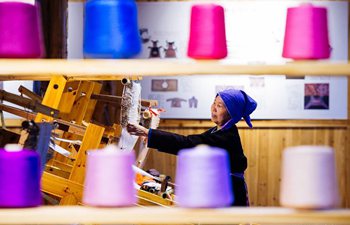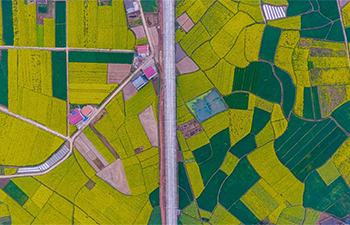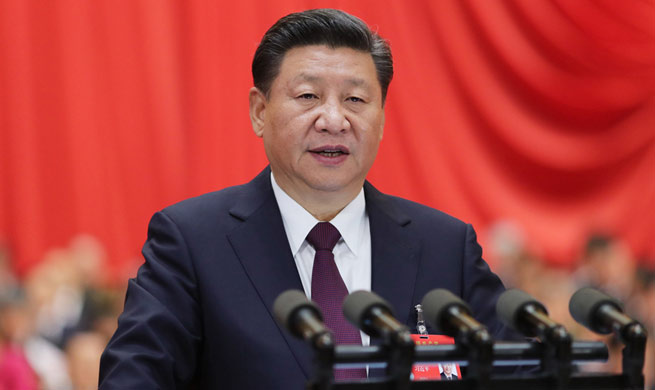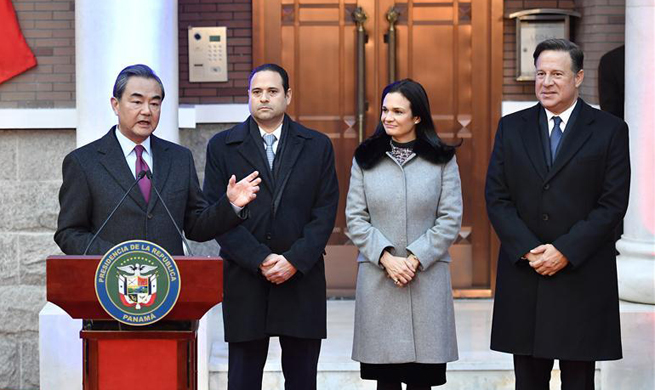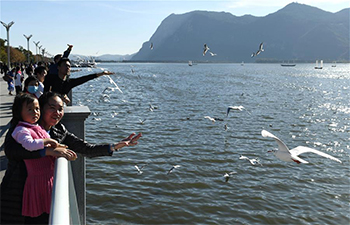SAN FRANCISCO, Nov. 16 (Xinhua) -- Scientists at U.S. University of California Berkeley (UC Berkeley) have successfully captured the detailed view of immune proteins by using cyro-electron microscopy, UC Berkely said in a new study released Thursday.
The latest discovery may help develop new pathogen-defense strategies, UC Berkely said in the study published on the journal Science.
The scientists caught the high-resolution image of a protein ring called an "inflammasome" as it was bound to flagellin, a protein from the whiplike tail used by bacteria to propel themselves forward, the university said.
An inflammasome consists of the NAIP5 and NLRC4 immune proteins. The number of NAIP5 regions that are bound to flagellin forms an important part of how the immune protein works.
The formation of inflammasome could activate a chemical alarm in the cell that leads to pyroptosis, a particularly dramatic form of programmed cell death in response to invasion by a pathogen.
Infected immune cells will discharge a swarm of cytokines that call for help from other immune cells when they swell like a balloon and burst, the study said.
"If just one bacterium had a mutation in flagellin that allowed it to sneak past NAIP5, it would have a massive advantage and multiply," said Russell Vance, lead author and a professor of immunology and pathogenesis at UC Berkeley.
Scientists assumed that so many domains of NAIP5 connect to flagellin meant that major mutations would be needed for a bacterium to go unnoticed, he added.
Minor mutations did not prevent NAIP5 from detecting the bacterial protein, but more significant mutations could let the bacterial protein slip by.
If dysfunctional flagellin impaired their mobility, the bacteria could be neutralized, the study showed.
The inflammasome structure illustrated in the latest research could be used to study related immune system proteins and help scientists draw up potential strategies for protection against pathogens.







